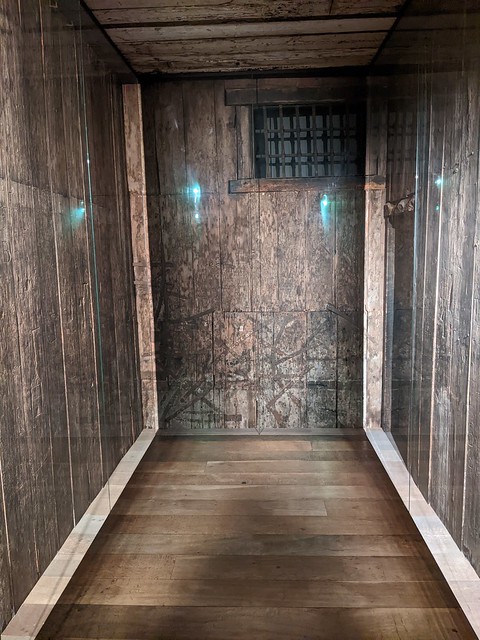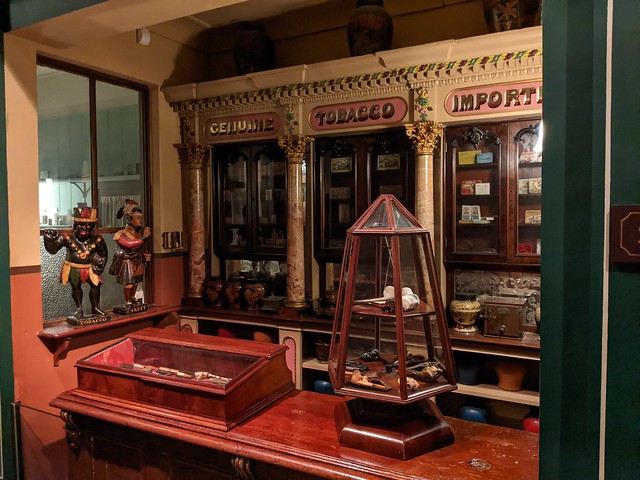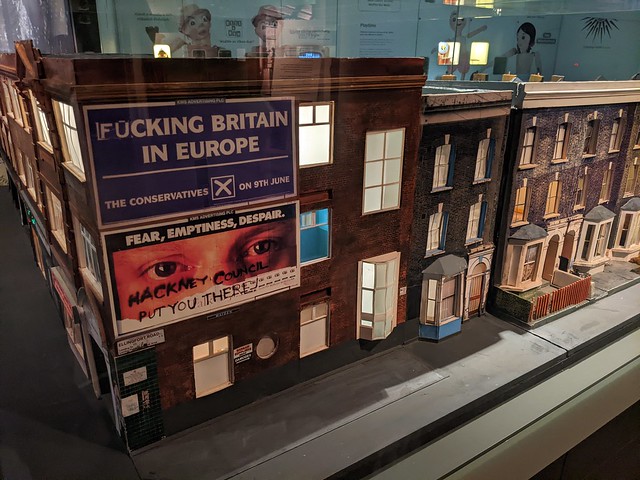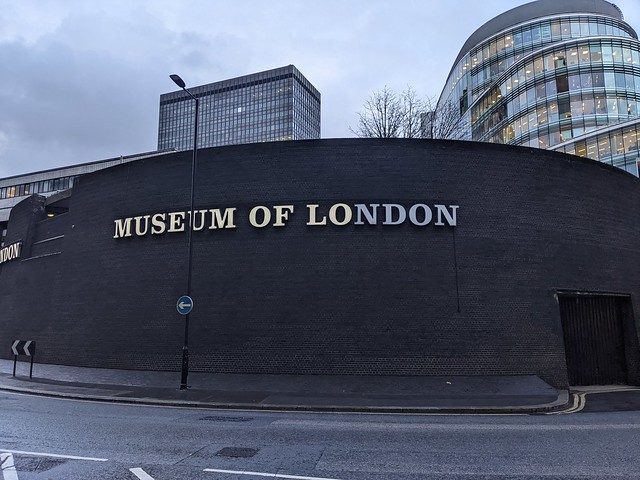Monday 28th November 2022
I took a last opportunity to visit the Museum Of London before it closes for ever on December 4th. Some time in 2026 a replacement “London Museum” should open in the former Smithfield Market buildings. Apparently they need to close now to begin moving the exhibits to the as-yet-unbuilt and as-yet-not-got-planning-permission replacement. This seems a bit early to me though it can’t be anything to do with making the existing site available for the
planned redevelopment as soon as possible I’m sure.
Anyway, time to re-acquaint myself with some of the exhibits in the existing museum which covers the whole time period from before London existed to the late 20th century.
Starting off at the same time as a large group of small, loud, and hi-vis clad school kids for the proper museum experience into the London before London bit, lots of pre-history artefacts, stones, bones and blades - the latter proving the most interesting to the smaller, louder visitors.

I managed to lose them somewhere in the Roman period and by Early Medieval could browse without fear of obstruction - or treading on one. There’s a lot of Roman London with reconstructed Roman “shops”. Also some high quality sculptures from the
London Mithraeum, which is somewhere else I must visit. On through the middle ages, in the earliest parts of which London was abandoned and into the period when the city was really built up in size and importance. Through plague and fire, both of which have large displays, and into the Georgian era. Something I’d missed on previous visits (and nearly walked by again) is the Wellclose Square wooden prison cell c.1750, the walls of which are covered in incised graffiti.
Amongst the carved names and pictures I was able to make out the following ode:
"The Cubards Empty
To Our Sorrow
But Hope it will
Be Full to Morrow"
I hope the author wasn’t locked up for their poetry.
Descending the stairs to ground level you enter the 19th century, the age of empire, and the recreated Victorian street scenes with shops, bank, tobacconists, and even an easily missed (not in that sense) public urinal.
I’ll be amazed if this gets recreated in the new museum - especially the tobacco shop - so I made sure to take photos of most of iy for posterity. After the Victorians the displays move into the 20th century, two world wars and the massive changes that they brought to the City of London and to the population therein. There is hardly a museum in this country that doesn’t play to this country’s pre-occupation with historical wars but despite the huge impact on London of the second bout of unpleasantness the Museum of London’s coverage isn’t too full-on, focussing on the people’s stories rather than trying to recreate the “experience”.
Coming now to the bit of history that’s not history for some of us there is quite a bit about post-war London and cultural change through the 60s, 70s, and 80s. So here’s three things that brought back memories for me.
The Protein Man’s Sign
Stanley Owen Green (22 February 1915 – 4 December 1993), known as the Protein Man, was a human billboard in central London in the latter half of the 20th century.
For 25 years, from 1968 until 1993, Green patrolled Oxford Street with a placard recommending "protein wisdom", a low-protein diet that he said would dampen the libido and make people kinder. His 14-page self-published pamphlet, Eight Passion Proteins with Care went through 84 editions and sold 87,000 copies over 20 years.
I can remember seeing him in and around Oxford Street when I used to come “up West” with a schoolmate.
The Firestone Factory Gates
The gates from the Art Deco Firestone Factory, Great West Road, Brentford. Shamefully demolished by the developer Trafalgar House the Sunday before it was to be made a listed building.
I grew up in Heston and my grandparents lived in Hounslow and can remember them and my parents talking about this when it happened.
Watch With Mother
This was a cycle of children's programmes broadcast by BBC Television from 1952 until 1975, it was the first BBC television series aimed specifically at pre-school children. We listened BBC radio's equivalent Listen with Mother as well, which had begun two years earlier. Although mother was often too busy with housework to actually watch with us. The museum has a sitting area where you can watch a small black and white telly playing excerpts from The Woodentops, The Flowerpot Men, and Andy Pandy. (Google them, OK)
This, imprisoned behind glass, is Andy Pandy. I had a pose-able Andy Pandy figure made of rubber with a wire internal frame. As the rubber degraded over time the sharp ends of the wire would be able to poke out. It was bloody lethal and the sort of thing that would even make a modern day cheap Chinese toymaker blush! (When we got older we formed a theory that there was something going on between that bear and Looby-Lou behind Andy’s back but that’s another story.)
I’d not seen this before. Interesting back-story and some things don’t change.
Whatever the new museum turns out to be it won’t be like this. Some people will no doubt regard that as a good thing. There was a display of ideas being proposed for the new museum and a story board liberally sprinkle with marketing-speak and corporate bolx but we’ll just have to wait until 2026 (if it’s not late) to find out.
You’ve got until Sunday 4th December to see what went before.
The above will be history.












